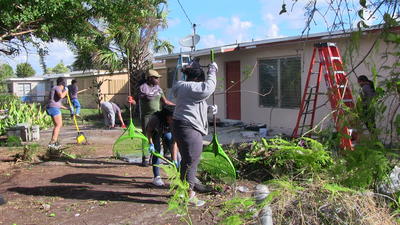Topic(s): News
Headlines: The latest on vacant, abandoned, and deteriorated properties – January 25, 2019
January 25, 2019

This is our twice-monthly round-up of news stories covering challenges related to vacant, abandoned, and deteriorated properties — and how communities are transforming these properties into assets. (The headlines are for informational purposes only; inclusion does not indicate endorsement.) If you’d like to get this round-up in your inbox, join our email list!

Milwaukee, Wisconsin. (Credit: Center for Community Progress, 2018)
National
Low-income renters face eviction, thanks to government shutdown
“Thanks to the shutdown, roughly 1,150 contracts between HUD and private property owners are already in limbo. Another 500 contracts are set to expire in January, affecting tens of thousands of residents, with another 550 contracts to follow in February.”
Kriston Capps | CityLab | January 10, 2019
The other housing crisis: Cities where home prices are low because people have left
“Major cities such as Detroit, Cleveland and Buffalo, plus parts of Pittsburgh, Philadelphia and other cities, also face home prices that are too low, leaving little financial incentive to build new homes or improve old ones, because money invested can’t be recouped.”
Haisten Willis | The Washington Post | November 29, 2018
How a ‘segregation tax’ is costing black American homeowners $156 billion
“According to “The devaluation of assets in black neighborhoods: The case of residential property,” owner-occupied homes are undervalued by the real estate market across all majority-black neighborhoods, and consistently sell or are appraised for lower prices, at an average of $48,000 per home. Nationwide, this amounts to $156 billion in cumulative losses, what the report dubs a ‘segregation tax.”’
Patrick Sisson | Curbed | November 27, 2018
Florida
To fight blight, one city turned to courts
“What’s unique about St. Petersburg’s effort is that it specifically targets abandoned homes and vacant lots owned by absentee landlords and is focused on turning those properties into affordable homes for lower-income residents. The initiative has cost the city $750,000 while generating $2.1 million in revenue in liens and assessments collected at auction.”
J. Brian Charles | Governing | December 21, 2018
Kansas
KCK wraps up third year of SOAR housing program aimed at fighting blight
“‘What we’ve seen in those neighborhoods where a house has been taken from a status of vacant and dilapidated to a nice-looking, new home is the neighbors are doing things because they are invigorated to see the investment in their neighborhood. That makes us really excited because we know what we’re doing is working,’ said Melissa Sieben, assistant county administrator for the Unified Government.”
Charlie Keegan | KSHB 41 | January 7, 2019
Mississippi
Meridian Adopt-A-Lot program inspires revitalization
“‘It’s all about beautification,’ Laura Carmichael, the city’s director of Community Development, said. ‘It brings back neighborhood pride. You see these lots getting cleaned up and it just instills a sense and that just spreads throughout the city.'”
Whitney Downard | The Meridian Star | January 1, 2019
Pennsylvania
‘Milking’: How some absentee property owners contribute to blight in the Pittsburgh region
“Unlike other investors committed to maintaining and improving properties, the “milker” neglects upkeep and utilizes a variety of legal and bureaucratic systems, such as bankruptcy court and complicated real estate transactions, to avoid liability while still turning a profit. According to Mallach, the impact of milkers can be difficult to track.”
Mark Kramer | Public Source | January 22, 2019
New loans for home repair may be lifeline for Philly ‘small landlords’ – and their tenants
“Early next year, with the help of some state funding, the city is expected to launch a pilot program that will hand out loans to “small landlords” — those who own four or fewer units.”
Aaron Moselle | WHYY | December 18, 2018
And, Lastly, a Blight Bright Spot!
Volunteers attack neighborhood blight with paint and smiles on MLK Day of Service
“‘We find a community, shut down a block, we all come together on one day of service and completely paint and landscape from five to ten homes in one day,’ [Executive Director Robin Martin Jr.] said. ‘In 15 years we’ve probably done 700 homes [and] last year we worked on 150 homes.'”
Wayne K. Roustan | Sun Suntinel | January 19, 2019
Subscribe to join 14,000 community development leaders getting the latest resources from top experts on vacant property revitalization.

